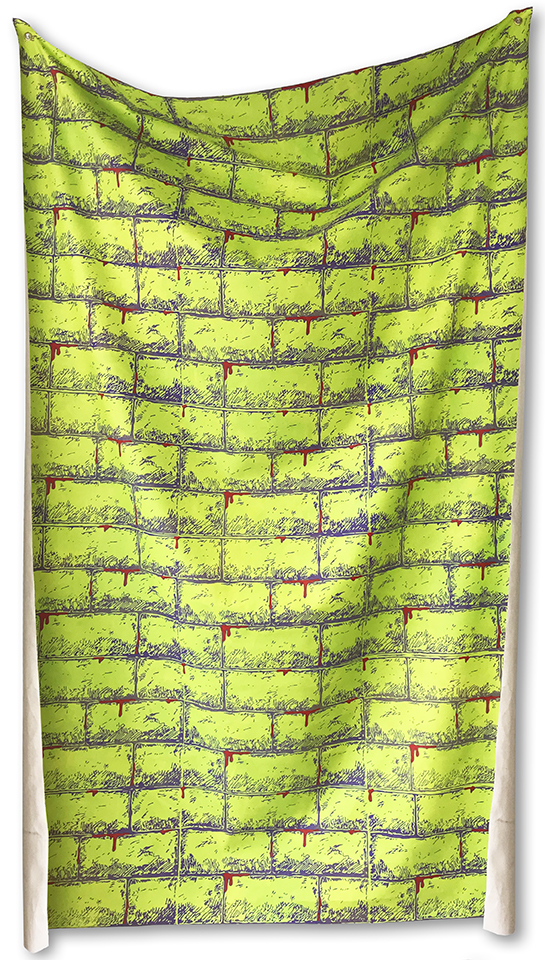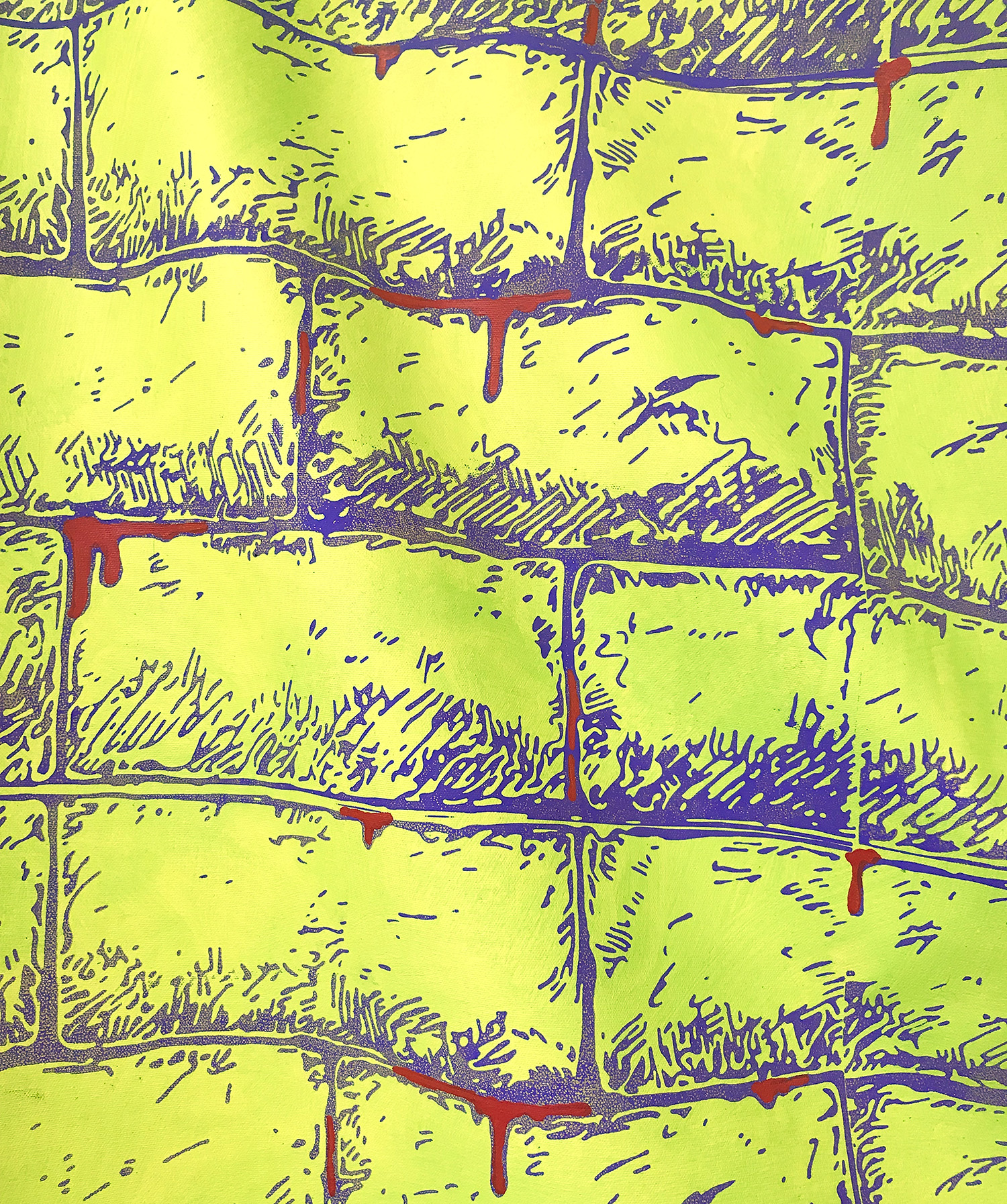Conversation on Castle Wall
Contributors
Yuck!
The following is a fragment of a dialogue between Curtis Welteroth (Artist) and Lustre O. Westritch (Writer, Filmmaker) conducted on October 4th, 2019 on a walk from Curtis’ studio.
L.O.W.: Traffic’s a bit shit today.
C.W.: Yeah really. Nobody here
knows how to drive.
L.O.W.: I would say so. We didn’t get to talk about it much in your studio, but while I still have the recorder going can you talk a little about the Wall piece you’re working on?
C.W.: Oh, the Wall. I conceived it more as a Castle Wall piece, not just as a Wall. Something more specific to the style of European Gothic and Romanticism.
L.O.W.: Right, right. We talked about the Gothic for a good bit.
C.W.: We did. Again, before I moved here I wanted to mine the origins of the horror genre, just from my personal affinity for anything horror related since I was [a] kid. So in my research I started in European Gothic Horror with Horace Walpole’s Castle of Otranto, what a lot of scholars believe was the first Gothic Horror text. [To me] It was this perfect combination of melodrama, humor, and, of course, horror in under a hundred pages; the mystical antagonist/savior in the work being a giant haunted suit of armor. Only after doing more research on Walpole did I learn he also designed his own castle to live in: the Strawberry Hill House. It certainly doesn’t look as haunted as people would expect it to be today, or at least as I thought it to be for something considered related to Gothic, but it ushered in this fetishistic, aesthetic appeal for failed riches, the supernatural, the sublime, this wide variety of movements across all the arts. So to me, that castle, the one Walpole designed and lived in and where he wrote Otranto, is one of the core origins for so many other horror tropes and icons we recognize today, from Frankenstein and Dracula, to The Blair Witch and Midsommar.
L.O.W.: So you’re interested in tracing these thematic lineages back. How do you see that history being articulated in Castle Wall then?
C.W.: Well to start, the design of the bricks and their more worn rendering speaks to something older, not of cinder blocks or an industrial style more recognizable today, to take it at face value. Not to mention the repeated blood drips between the bricks is such a cliché B-Movie horror trope to the point of being laughable, along with that almost blinding and confrontational chartreuse you’re hit with when seeing it. It’s that exaggerated emotion and improbable circumstance/fiction that encapsulates so much of gothic horror to me. It runs that fine line between fear and humor; I’m thinking of the hysterical in a Freudian sense to meet in the middle. Not to mention how I’ll want the actual Castle Wall piece to be draped, rather than just hung. It needs to be subdued and failed as a wall further. Not to be taut or sturdy, but something trying to billow with more airiness. Failure also being a core theme to Horror, with movie monsters, but also with corruption and a sense of societal rejection, Frankenstein’s Monster as a good example. I don’t want to make props pulled from literature or films, but to exaggerate their already exaggerated ideas, potentials and origins; to queer them further.
L.O.W.: And queerness is inherently
tied to horror for you.
C.W.: Absolutely.
L.O.W: So then why a Wall specifically?
C.W.: I thought the Wall, this Castle Wall, to be a good jumping point into that theatricality of horror. To provide more a setting for its future installation and dialogue with other pieces, as a backdrop in a way. The farther along it’s been coming, the more contradictions I realize it can pose to the viewer: Is it a hand-made work of art, or a ready-made Halloween decoration? Is it solid, or flowing? Is it man-made, or made of man? Is it a space to explore, or an object to own? Are we inside the setting of the wall, or the outside? Is it yellow, or is it green? It became (and is becoming) a more abjected wall in that sense. Well maybe not the Wall being the abject, but this iteration of the wall being realized by the viewer from a separate abject experience and it producing those abjectional disorient-ing effects.
L.O.W.: So then would you say all those contradictions in Castle Wall are what make something queer to you?
C.W.: Of course. Queerness to me is finding a different kind of success through failure, or rather, knowing that failure to be its own reward…
[End of interview fragment.]

